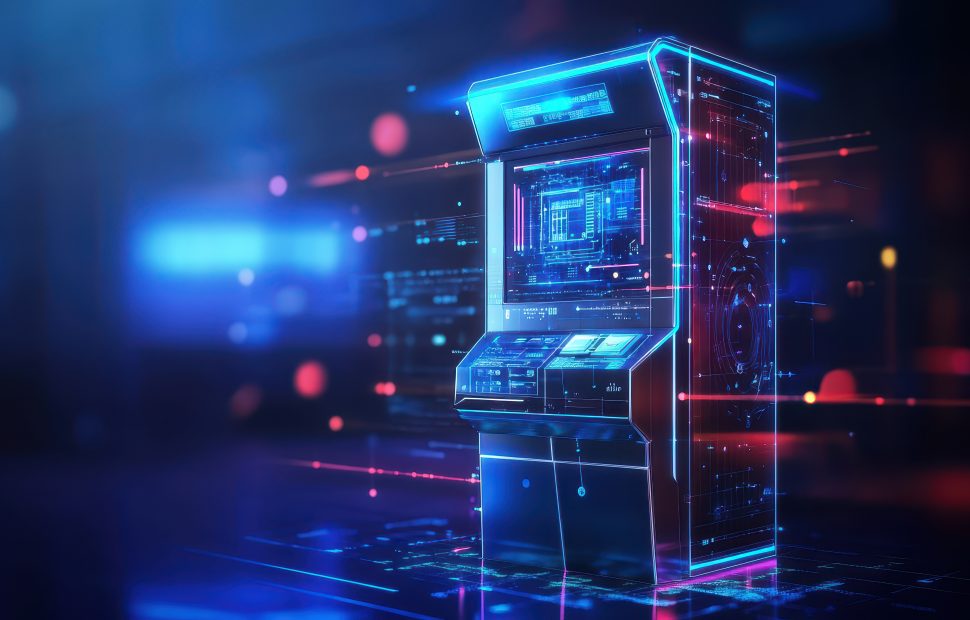AI Revolution in ATM Technology

AI in ATM technology is quietly changing how networks operate around the world. Right now, adoption is still limited. But early adopters are already seeing better uptime, stronger security, and improved customer satisfaction. A recent survey shows that about 8% of ATM networks use AI-driven technology today. Another 18% plan to adopt it in the next few years. The global ATM managed services market is also growing fast. It’s expected to reach $12.29 billion by 2033. AI in ATM technology is a major driver of that growth.
AI Adoption Trends in ATM Services
Industry adoption of AI is accelerating. A recent survey revealed that 8% of banks already have live AI-enabled ATMs, while another 18% expect to incorporate the technology in the coming years. This shift reflects broader AI growth: by 2025, the global artificial intelligence market is valued at $391 billion, projected to surge over 20% annually, and nearly 90% of businesses are adopting AI to stay competitive.
These trends are particularly relevant to ATM providers, including ATM Advantage. As an early adopter within your networks, AI positions your company to support operators aiming to modernize their infrastructure and improve performance.
Predictive Maintenance & Uptime Optimization
Diebold Nixdorf’s DN AllConnect℠ Data Engine aggregates real-time IoT sensor data from over 240,000 ATMs globally and applies machine learning to predict failures before they occur. In many deployments, downtime has dropped by up to 50%, translating to availability boosts of 1.3–3.5%—a meaningful improvement over typical ATM uptimes of 96–97%.
For operators, this means fewer emergency service calls, lower maintenance costs, and more predictable service schedules. End users benefit from consistently available machines—less frustration and faster, reliable service. This powerful value proposition aligns beautifully with the solutions ATM Advantage delivers.
Fraud Detection & Security Enhancements
AI-driven fraud models are transforming ATM security by analyzing live transaction and device telemetry to spot anomalies in real time. One study using stacked classifiers—Random Forest, LightGBM, CatBoost—reduced false alarms from 3.56% to just 0.71%, while attaining overall accuracy of 99.29%.
In tandem with EMV chip integration, biometric authentication and encryption, AI strengthens security at both physical and transactional levels. Although biometric usage currently remains relatively low in ATM deployments, early pilots—such as cardless authentication via facial recognition—show promise. Banks that deploy in‑machine AI models gain faster detection of tampering, skimming attempts, and behavior anomalies, protecting both operators and cardholders.
Personalization & User Experience
AI in ATM Technology also personalizes interactions. Machine learning enables ATMs to learn user behavior over time—like preferred language, quick-cash amounts, or loyalty-based offers—and adapt the interface accordingly. Next-generation systems such as NCR’s support for voice-guided access and natural language interfaces are increasing both ease of use and accessibility.
This personalization not only speeds transactions but also improves inclusion. For users with disabilities, voice announcements or multilingual prompts can make ATM use more accessible—differentiators for banks and operators who choose to invest in AI-enabled interfaces.
Cash Management & Demand Forecasting
AI improves cash management by analyzing foot traffic, past usage, and local trends. This helps banks adjust cash deliveries before machines run out or overstock. While detailed case studies are still limited, early reports from retail banks and emerging markets show real gains. Inventory runs more smoothly, and outages happen less often.
AI is also changing how ATMs work in modern banking. It helps with predictive maintenance, fraud detection, personalization, and smarter cash flow. These tools boost efficiency and make things easier for both banks and customers.
This shift goes beyond just upgrading technology. It’s changing how people interact with financial services. As the industry moves past basic automation, AI in ATM technology will keep driving smarter, safer, and more responsive machines. Adoption is still growing, but the direction is clear: AI is shaping the future of ATMs. Banks that move now will be ready for what comes next.








